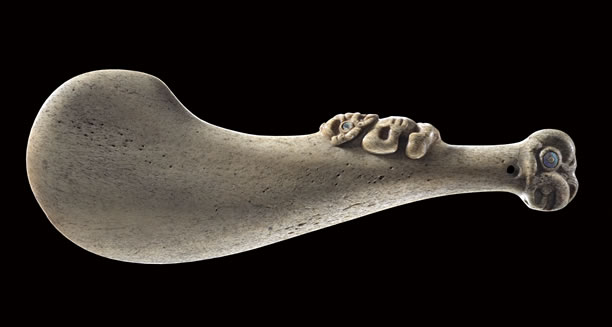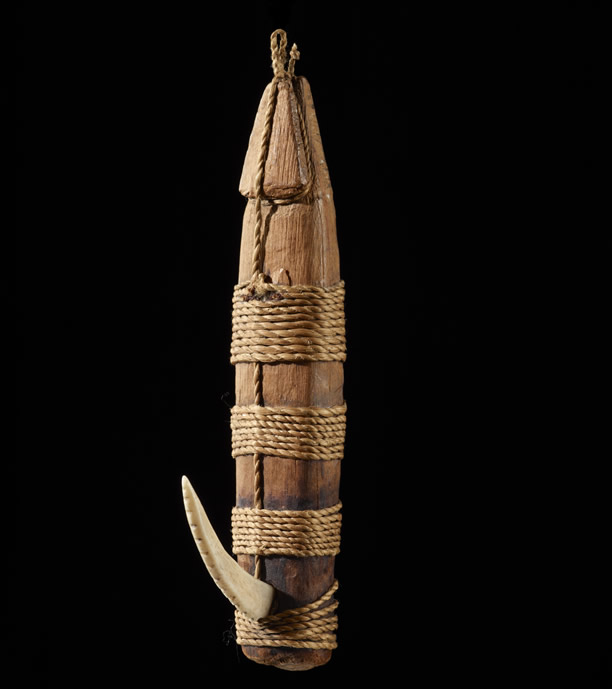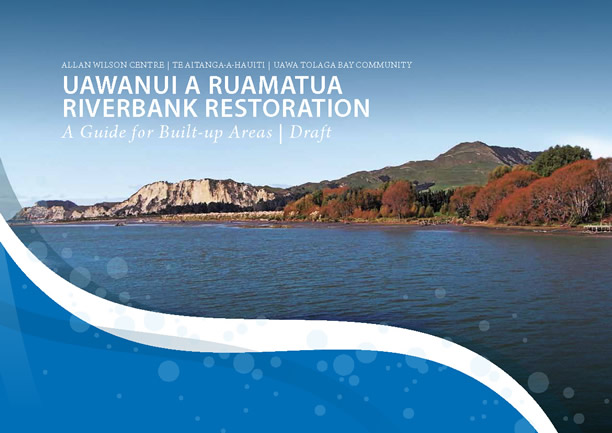When Lieutenant James Cook and the crew of the Endeavour encountered Aotearoa New Zealand for the first time in 1769, they were confronted by much that was new. Alongside the Imperial imperative to seek out and potentially claim new lands and resources, a scientific focus and desire to learn drove much of what they did in their months in New Zealand. Anne Salmond explains the expedition’s focus in her book The Trial of the Cannibal Dog: Captain Cook in the South Seas:
His voyages epitomise the European conquest of nature, fixing the location of coastlines by the use of instruments and mathematical calculation, classifying and collecting plants, animals, insects and people. [1]
Within minutes of setting foot onshore, plant specimens were snipped and gathered, but the initial scientific expedition was soon disrupted by the sound of gunfire in the distance. This incident left an important rangatira, Te Maro of Ngāti Rakai (now Ngāti Oneone) dead within a few hours of the Endeavour’s arrival. This first violent encounter was documented in Cook’s diary and those of others on board the Endeavour, as well as being passed on through oral traditions by Māori.
Further interactions with Māori were mediated by the presence on board the Endeavour of Tupaia, a Tahitian high priest and navigator. An important tohunga, Tupaia could communicate with Māori, understood their customs and earned the respect of the Māori he encountered.
Cook’s diary, and the diaries of naturalist Joseph Banks and others, were filled with scientific observations and recollections of the day’s events as well as impressions of Māori. As the voyage continued, a rich archive was compiled, consisting of documents and diaries written by Cook and his companions, botanical specimens, drawings and notes on the native flora and fauna, and a rich selection of tāonga (treasures). This resource has become increasingly valuable, particularly for Māori and conservationists in Aotearoa, as colonisation and settlement had a severe impact on Māori and the New Zealand natural environment.
Island Productions Aotearoa Ltd.
Māori from Uawa (Tolaga Bay) explain how items collected and written about on Cook’s voyages are of great value to them, particularly as they piece together past events and revive cultural practices and focus on environmental rejuvenation in Aotearoa New Zealand in the 21st century.
Uawanui a Ruamatua Riverbank Restoration
An important project touched on in the video is the Uawanui a Ruamatua Riverbank Restoration in Tolaga Bay. This project aims to restore the lower reaches of the Uawa River, which passes through the Tolaga Bay township. Joseph Banks and other Endeavour crew members commented on the quality of the gardens and environment in this area. However, by the 2000s the site had become overrun by introduced weeds, and devoid of many of the original native fish and bird species. The project not only aims to restore the native flora and fauna but will reconnect people and the community with the river, as well as revive cultural practices such as sustainable harvesting of food and vegetation. It will cover whitebait and tuna fishing, harvesting plants like harakeke and raupo, and relearning rongoa (Māori medicine).
The botany collection
Between 9 October 1769 and 31 March 1770 botanists Joseph Banks and Daniel Solander collected 360 plant specimens, and their work didn’t stop there.
Once collected, each specimen was described, dried, and stored for preservation. Banks's botanical artist, Sydney Parkinson, had the job of creating accurate illustrations of the specimens. He sketched them, made notes on their colours, then did complete drawings, and lastly made full colour illustrations.
Daniel Solander wrote a manuscript describing all the species collected from New Zealand during the six-month expedition. The manuscript was called ‘Primitiae Florae Novae Zelandiae’ ('beginnings of a New Zealand flora'), and was to be illustrated with the plates prepared by Banks. It was never published, but it was available for study by anyone interested, first at Banks's London home, then in the Natural History section of the British Museum.
The Museum of New Zealand Te Papa Tongarewa (Te Papa) now holds several hundred of the specimens collected in New Zealand. In the following video Te Papa Senior Curator Dr Patrick Brownsey explains the collection and how Banks and Solander preserved the plant specimens they saw.
A further resource that was developed from the botany collection was Banks’ Florilegium, a set of limited-edition coloured botanical prints created from engravings. Banks employed 18 engravers and it took 13 years to complete the 738 engravings representing specimens collected on the 1768–71 voyage. A full set of the 183 New Zealand plants is now in the Te Papa collection, reflecting the abundance of plants throughout the country.
Taonga
Taonga (treasures) were also collected by Cook and his crew in Aotearoa New Zealand. Some items were gifted while others were traded or exchanged. Some were taken by force. Today, museums, archives and private collections around the globe hold many objects collected on Cook’s voyages between 1769 and 1779. These items are representative of cultural practices, artistic activities and many aspects of everyday life. Like the botany collection, these taonga are important representations of the past and the present day. They provide an opportunity to unlock lost cultural knowledge and embody cross-cultural stories which are relevant to significant historical moments.

Oldman Collection, Te Papa. OL000061.
Wahaika, whalebone and paua shell, unknown Māori maker, 1500–1777.
The heavy whale-bone wahaika (short-bladed weapon) pictured above showcases artistic design and the symbolic use of gods or tīpuna on weapons. The pommel of the handle, decorated with a carved manaia (bird-like figure) head, probably represents a tipuna or god whose essence was embodied in the wahaika. In addition it is an excellent example of a Māori weapon, and it shows that whalebone was used in the construction of weapons.
Another significant aspect of this taonga is that it represents an interaction between Māori and a European crew member – in this instance during Cook's third voyage to New Zealand in 1777 on HMS Discovery.
A label glued to the wahaika states 'Brought from New Zealand in 1777 by midshipman Burr in the Discovery (Captain James Cook). Given to his sister in Bath, when an old lady, gave it to Dr. Joseph Hume-Spey of that town, in whose family it remained until October, 1909’. [2] The wahaika was later acquired by London dealer W.O. Oldman and sold, as part of a collection of Māori and Pacific objects, to the New Zealand government in 1948. With its well-documented provenance, this taonga highlights the way in which Māori taonga were valued and exchanged beyond the initial trade in the 18th century.
Other important taonga were deposited at Te Papa as part of another large collection known as the Lord St Oswald collection. In 1912, England’s Lord St Oswald gifted his family collection to New Zealand’s Dominion Museum (a forerunner of Te Papa). Many of the taonga in this collection have a connection to Cook’s voyages to New Zealand. One example is a pohau manga (barracouta lure).

Te Papa, ME002494.
Pohau manga (barracoota lure), unknown Māori maker, 1750–1777, New Zealand. Gift of Lord St Oswald, 1912.
Like the wahaika, the fishhook illustrates design elements and the use of certain materials – in this case the use of wood, bone and muka (flax fibre) in the construction of fishing lures. The fishhook is also a reminder that fishing was an important aspect of everyday life for Māori and that barracouta were plentiful and caught in great numbers.
Another object, a hoe (paddle), represents a popular and highly regarded gift offered by Māori on the East Coast. The painted hoe pictured here were acquired during Cook’s 1769 voyage, and are thought to have been used on a waka taua (war canoe) that greeted or challenged the Endeavour. Evidence suggests that they were given to Tupaia, the Tahitian high priest and navigator. Today they are part of the collection of the Museum of Archaeology and Anthropology, University of Cambridge.
Hoe like these, and other examples in museum collections around the world, offer an opportunity to learn about regional painting and carving styles. They also show the shape, design and materials used in the creation of waka taua paddles.

These two paddles (hoe) were acquired by the crew of the Endeavour during their visit to New Zealand in 1769–70.
Gift exchange
Although gift exchanges were often mutually agreed, Europeans and Māori had different practices and understandings of reciprocity. Both had their own rules, obligations and culturally defined understandings around what was expected or required when gifts were exchanged or goods traded.
For Māori, gift exchange was essentially about developing mutually beneficial relationships. A gift might come with an expectation of a continuing relationship and friendship, and it might incur a requirement to reciprocate with either an item of equal or higher value or a generous act in kind. [3] While it was normal for Māori to delay a return gift, crew on the Endeavour expected an immediate exchange. These differences in understanding around trade and exchange resulted in several violent incidents.
Another common misunderstanding occurred when personal property was taken by Māori as compensation for an offence against an individual or community. This was regarded as a form of utu (system of reciprocity) called muru, which was ‘an effective form of social control, restorative justice and redistribution of wealth among relatives’. [4] Once muru was performed, the matter was considered to be ended. The nature of muru was determined by factors that included the mana of the victim and the offender, the severity of the offence, and the intent of the offending party. If balance was not restored, a taua (war party) might become necessary.
On several occasions during Cook’s first voyage, when trade or exchange did not go as expected, physical punishment, injury or death ensued. On 3 November 1769, near Whitianga, trade ended badly when it was thought that Māori were cheating.
Musketballs were fired through the hulls of their canoes and two of the culprits were shot with smallshot. These men bled profusely, but their companions ignored them and resumed trading with the strangers until another man tried to keep goods without making any return. A musketball was fired through the hull of his canoe, and then Cook ordered a cannon loaded with round-shot to be fired over their heads, sending the canoes paddling back to shore in a panic. [5]
In another incident in the Hauraki Gulf, a ‘Māori warrior’ was caught stealing a half-minute glass from the ship’s cupboard. Lieutenant Hicks tied him up and he was given 12 lashes with a whip known as the cat-o’-nine-tails. This punishment was apparently seen as justified, as a chief gave the culprit a further ‘thrashing’ – theft was considered shameful in Māori custom too. [6]
A type of exchange commonly undertaken by Māori which was more in line with a European worldview was bartering. In this situation, goods of similar value (in the eyes of both parties) were exchanged at the same time. As increasing numbers of Europeans came to Aotearoa New Zealand in the 1800s, many Māori recognised the economic benefits of developing a positive trade relationship with Europeans. However, as Māori were still the majority, trade and other Pākehā practices were conducted on Māori terms, with the concepts of mana, tapu and utu playing significant roles.
Discussion/teaching points
A. The nature and purpose of the exchange of tāonga and other objects between Māori and Europeans is worth unpacking a little more. Cook’s arrival in 1769 saw the first gifting of tāonga by Māori to Europeans. Paora Tapsell described how these tāonga left an ancient Pacific culture of reciprocity and belonging, and entered a foreign system of legal title and museums. Eventually thousands of tāonga were acquired by Europeans. Some were gifted, often in acknowledgement of agreements or relationships. Others were bought or traded. Some were stolen.
With your class, consider:
- The role played by Tupaia in these early exchanges between Māori and Europeans. How might Cook’s voyage have played out had Tupaia not been present?
- The purpose and benefits of the exchange of tāonga/objects for Māori and Europeans.
- Explore with your class the meaning, or their understanding of, ‘reciprocity’.
- What might be the challenges for different cultures in understanding what the other group sees as being valuable?
- What might Māori be willing to exchange and what they might not?
- What do students believe makes for a fair exchange of objects?
- With a focus on art and/or science, collect plant specimens from your local area. Draw, describe, press and preserve these, just as Banks and Solander did in 1769.
- Find out more about uses for these plants.
- How might the work of men like Banks and Solander help modern projects such as Tolaga Bay’s Uawanui a Ruamatua Riverbank Restoration?
- Search for tāonga on Te Papa’s Collections Online webpage.
- Get your students to select something from the collection and describe the stories or information that can be gained by studying these items.
- What sort of things did Europeans exchange with Māori?
- How did Māori view these items? Were they seen as curiosities or as something practical/useful? Were they analagous to tāonga?
B. It was only Cook, Banks and Solander who collected tāonga and other artefacts from Māori. Other crew members acquired things that in some cases ended up in the museums that began to emerge in the era of Europe’s industrial revolution and imperial expansion. Such items became part of collections that were exhibited in institutions such as the British Museum. For such museums, these items were evidence of colonial expansion that highlighted for visitors the extent of the empire’s reach. Many Māori tāonga and things taken from other places were treated as curiosities, ‘divorced from the culture that produced them’. Over time, museums and collectors in New Zealand traded tāonga with overseas museums and collectors as a way of acquiring artefacts from overseas. Māori tāonga eventually ended up in the collections of almost every major museum in the world.
- Explore the concept of kaitiaki or the broader notion of kaitiakitanga with your class. Te Takanga o te Wa, Māori History guidelines for Years 1-8is a good starting point for this discussion
- Why might Māori have given some tāonga to museums to keep for them?
- Should museums have to return tāonga to the iwi that they came from? Explain why or why not.
- Discuss the issue of repatriation with your class; what might that look like for Māori?
- Explore the idea that some taonga embody ancestors. Ask your class how they would feel if their ancestor was held in a museum collection.
- Using Paora Tapsell’s entry from Te Ara, Māori and museums – ngā whare tāonga, examine how the place of Māori tāonga and artefacts in museums has changed over time.
- Investigate some of the items Europeans exchanged with Māori during these early encounters.
Further reading
Basil Keane, 'Te Māori i te ohanga – Māori in the economy', Te Ara - the Encyclopedia of New Zealand, http://www.teara.govt.nz/en/te-Māori-i-te-ohanga-Māori-in-the-economy (accessed 1 May 2019)
Anne Salmond, The Trial of the Cannibal Dog: Captain Cook in the South Seas. Allen Lane, Penguin Books
Māori and museums – ngā whare tāonga Te Ara https://teara.govt.nz/en/maori-and-museums-nga-whare-taonga
A frontier of chaos? NZHistory https://nzhistory.govt.nz/culture/pre-1840-contact/frontier-of-chaos
Read more about Banks’ Florilegium and see the collection on Te Papa’s Collections Online https://collections.tepapa.govt.nz/topic/576
'Encounters', URL: https://nzhistory.govt.nz/culture/encounters, (Ministry for Culture and Heritage), updated 5-Apr-2019
Notes
[1] Anne Salmond, The Trial of the Cannibal Dog: Captain Cook in the South Seas. Allen Lane, Penguin Books. p. xix
[2] https://collections.tepapa.govt.nz/object/115784
[3] The Māori economy (Te Ara)


Community contributions